
When it comes to fantasy football analysis, it is exciting to see what you got right at the end of the season. However, it is more important to see what you got wrong.
It is a very important part of the process to see why things went a certain way for players over the course of the season and a great way for me to do just that is to revisit my Fantasy Crossroads series from the summer. Each article featured two players (three, once) where I’d make an argument for and against both players, ultimately choosing one to draft in fantasy leagues.
And now we are going to see how those matchups played out during the 2023-24 season.
Derrick Henry vs. Tony Pollard
The Pick: Tony Pollard
One of the most exciting players entering the 2023 season, Tony Pollard was set to have the largest workload of his career, which was so tantalizing considering how efficient he has been over the course of his career. During the 2020 and 2021 seasons, Pollard averaged 6.2 and 5.9 yards per touch, good for second and fifth among qualified running backs. That efficiency clearly continued in 2022, as Pollard finished 21st among running backs in touches but 15th in rushing yards (1,007), third in rushes of 15-plus yards (17), sixth in fantasy points per snap (0.44) and first in yards after contact per attempt (3.8). His 5.1 yards per carry rank third in all of football since entering the NFL in 2019 and despite seeing 60 more carries this past season, Pollard remained one of the best running backs in the league. The only real frustrating aspect last season was Pollard’s usage at the goal line, though with Ezekiel Elliott gone, I expected that to change.
Derrick Henry, meanwhile, has always seen immense volume. His carry totals over his last four healthy seasons have been 349, 378, 303 and 280. And while that insane volume is great for fantasy, it also caused many to question whether Henry would be able to hold up, especially since his efficiency was starting to take a dip. Over the last three seasons, Henry has been at 0.15, 0.20 and 0.20 avoided tackles per attempt, ranking outside the top-14 in every season since 2019.
The Answer: Derrick Henry
It wasn’t the prettiest season for Henry, though he did finish as the RB9, ahead of Pollard at RB14. Henry was pretty gamescript dependent, as he lost a ton of snaps on third down to rookie Tyjae Spears, who was on the field for over 85% of Tennessee’s third downs this year. As a result, Henry averaged just 11.5 carries and around seven PPR points per game in the six outings where the Titans lost by at least six points.
Pollard, meanwhile, was one of the top fantasy disappointments of the season. And the frustrating part? It looked like he was on his way to an elite season after Week 1. Against the Giants in the opener, Pollard rushed for 70 yards and two touchdowns, seeing four carries inside the 5-yard line. However, Pollard ultimately finished the year with 17 carries inside the 5-yard line (sixth most), but only scored three touchdowns from that area of the field. Pollard was an expected fantasy points darling. Per the FTN Fantasy expected points tool, Pollard scored more than 32 fewer points than expected. Meanwhile, the efficiency fell off, as Pollard took a pretty large step back when it comes to explosive run rate, avoided tackles and yards after contact per rush. After an underwhelming season and with Pollard set to hit free agency, it is fair to wonder if he’s the Dallas Cowboys’ starting running back next season.
| Season | Explosive Run % | Avoided Tackle % | Yards Per Route Run |
| 2023 | 8.3% | 17.9% | 0.85 |
| 2022 | 16.1% | 16.6% | 1.69 |
| 2021 | 13.3% | 16.9% | 3.04 |
Amon-Ra St. Brown vs. Garrett Wilson
The Pick: Amon-Ra St. Brown
I understand Garrett Wilson was a prime breakout candidate entering the season, but there was no way I was choosing him over Amon-Ra St. Brown. One of my favorite players in his draft class, St. Brown has dominated to start his NFL career. After a stellar rookie campaign in 2021 where he caught 90 passes for 912 yards and five touchdowns, St. Brown took his game to a different level in his sophomore year. The emerging star hauled in 106 passes for 1,161 yards and six touchdowns, finishing the season as fantasy’s WR7, despite missing a game. During that 2022 season, St. Brown was targeted on 30% of his routes, the second-highest rate in football behind Tyreek Hill (32%). As someone who already believed in the talent, I knew the Lions entire offense would run through St. Brown again in 2023, but I also expected more touchdowns.
Wilson, meanwhile, is well on his way to being one of the best wide receivers on the planet. As a rookie in 2022, Wilson was special, catching 83 passes for 1,103 yards and four touchdowns, finishing as the WR21 in fantasy. It was an even more impressive season when you consider the fact that Wilson played with three different quarterbacks, all of whom were, at best, below average. It surely contributed to Wilson’s 56% catch rate, but he showed serious upside during his rookie campaign, especially in games where Zach Wilson was not under center for the Jets. Per the FTN Fantasy Splits Tool, Wilson averaged 6.3 targets, 3.7 receptions, 49.6 receiving yards and just 8.8 PPR points per game in nine contests alongside Zach Wilson. However, in the games with anyone else under center, Wilson averaged 11.2 targets, 6.1 receptions, 81.1 receiving yards and 17.2 PPR points per game. The Jets also threw the ball a lot more in those games, but Wilson clearly demonstrated WR1 potential, and was treated as such by New York. Per FTN Data, Wilson’s 133 first-read targets trailed only Davante Adams and Justin Jefferson last season, and his 147 total targets were sixth in football.
The Answer: Amon-Ra St. Brown

St. Brown was unreal once again during his third season, hauling in 119 passes for 1,515 yards and 10 touchdowns. Watching him finish toward the top of the league in catches and yards didn’t shock me at all, but what really made the difference was the jump in touchdowns. Back in 2022, St. Brown was tackled inside the 5-yard line six times, third most among all wideouts. And it didn’t help that Jamaal Williams was so good at converting short-yardage carries into touchdowns that season, as he scored 14 times on a league-high 28 carries from that area of the field. However, St. Brown added more touchdowns with Williams gone and posted an insane weekly combination of floor and ceiling. In fact, he had either 90-plus receiving yards or a touchdown in 15-of-16 regular season games.
Wilson, meanwhile, was likely robbed of a season that could have possibly rivaled St. Brown’s. Aaron Rodgers suffered a torn Achilles just a few plays into the season, leaving Wilson to once again play a season with multiple backup level quarterbacks. Wilson still finished with 95 receptions for 1,042 yards but scored just three touchdowns in the Jets’ bottom-dwelling offense.
Bijan Robinson vs. Jonathan Taylor
The Pick: Bijan Robinson
This was an odd matchup. Bijan Robinson was often underutilized in Atlanta, while Jonathan Taylor missed seven games for the Colts. Going into the season, I was pretty excited about both players, but leaned with Robinson because I was so excited about his talent and fit in an exciting run scheme that also featured one of the top run-blocking units in the league.
Taylor, meanwhile, is one of the best running backs in the world and was going to perhaps have even more upside on a per-carry basis with Shane Steichen and Anthony Richardson joining the team. Steichen did a tremendous job with the high-powered Philadelphia Eagles offense last year, running a ton of RPO with Jalen Hurts. In fact, Hurts easily led the NFL in plays out of RPO in 2022 (148). Miles Sanders benefited from both Philadelphia’s elite offensive line and Hurts’ presence not just throwing the football, but also running with it, as he averaged 3.2 yards before contact per attempt (fourth). We have seen running backs playing alongside dual-threat quarterbacks post strong efficiency numbers and the presence of Richardson and a more creative, RPO-themed offense could help Taylor out quite a bit.
The Answer: Bijan Robinson
If Taylor hadn’t missed seven games, he likely would have outscored Robinson, especially given how maddening Arthur Smith’s offense was in 2023. Despite the Falcons selecting him with the eighth overall pick of the draft last April, Robinson only saw either a carry or a target on 29.2% of his snaps this season, which ranked just 20th among all running backs. Meanwhile, there were only five games where Robinson saw at least 50% of Atlanta’s total rush attempts, as Tyler Allgeier and even Cordarrelle Patterson played a role.
Lamar Jackson vs. Joe Burrow
The Pick: Lamar Jackson

One of the top storylines in fantasy football this offseason was Baltimore’s potentially pass-happy attack under new offensive coordinator Todd Monken. In Greg Roman’s offense over the previous three seasons, the Ravens ranked 32nd in all of football in neutral-script passing rate (49.2%), while Jackson only averaged about 28 pass attempts per game during that span. Monken, meanwhile, had leaned on the pass quite a bit throughout his career. He was the offensive coordinator in Cleveland in 2019 — in that season, the Browns ranked 10th in passing rate on early downs (55.3%). Meanwhile, when he was calling plays in Tampa Bay in 2018, the Bucs ranked fourth in passing rate on early downs (59.9%). This is going to be a serious change of pace for the Ravens, who sported an early down pass rate of 49.5% 2019-2022, 25th in football. Jackson was coming off a career-low 6.9 yards per pass attempt, but he was throwing to Devin Duvernay, Demarcus Robinson, Sammy Watkins and DeSean Jackson for much of the season. But don’t forget that Jackson ranked top-11 in yards per attempt in both 2021 and 2019. Fast forward to 2023 and Jackson will be playing in a higher-volume pass offense that added Zay Flowers and Odell Beckham this offseason, on top of getting Rashod Bateman back from injury. And when you remember that tight end Mark Andrews was still there, it was pretty easy to see that this was the deepest group of pass-catchers the Ravens have had in years.
It was a close matchup between Jackson and Joe Burrow, but I just felt that Jackson had more upside, especially if he got to throw the ball more, on top of throwing the ball to some talented wideouts for once.
The Answer: Lamar Jackson
It obviously didn’t help that Burrow not only entered the season with a pretty bad calf injury that clearly limited his ability to start the year, but he also saw his season end early after tearing a ligament in his wrist. It would have been interesting to see how Burrow finished the year with a clean bill of health.
Jackson, meanwhile, finished as fantasy’s QB4, averaging just over 21.1 points per game. He averaged just over 28 pass attempts per game, slightly up from 2022, so it wasn’t a huge jump in volume, however, Baltimore did see their early down pass rate climb from 49.5% from 2019 to 2022 to 57.8% this past season (seventh). Jackson also continued to provide a high floor with his rushing, averaging 9.3 attempts and 51.2 rushing yards per game.
DeVonta Smith vs. Chris Olave
The Pick: Chris Olave
This was a fun matchup between two of the best young wideouts in the game. I went with Chris Olave because I was excited about his upside, especially on passes deep down the field. I also believed Derek Carr was going to be a massive upgrade over the quarterback situation the Saints had last year, which was sometimes the case but not always. Meanwhile, as good as DeVonta Smith is, I was a bit worried about what his production would look like with a healthy Dallas Goedert. Goedert suffered a shoulder injury in Week 10, keeping him out of the lineup Weeks 11-15. During that stretch, Smith averaged 8.4 targets, 5.0 receptions, 84 receiving yards and about 16 fantasy points per game. However, in Weeks 1-10 (with Goedert), Smith averaged 6.7 targets, 5.1 receptions, 55 receiving yards and just over 12 fantasy points per game.
The Answer: Chris Olave
My main concern with Olave entering the year was if Michael Thomas would finally stay healthy. And for the first 10 weeks, he did just that. However, he missed the final seven games of the year, paving the way for Olave to dominate targets in New Orleans. He ultimately finished the year with 87 catches for 1,123 yards and five touchdowns but it could have been much more. Carr and Olave often struggled to connect on deep passes, as Olave led the NFL in unrealized air yards with 1,058.
T.J. Hockenson vs. George Kittle
The Pick: T.J. Hockenson

After what we saw from T.J. Hockenson once he was traded to the Vikings in 2022, there honestly weren’t many tight ends in fantasy I would have chosen over him going forward. After the Week 9 trade, Hockenson was not only a focal point of the Vikings passing attack, but he was legitimately the second-best tight end in all of football. From Week 9 to Week 18, Hockenson averaged 8.2 targets, 6.0 receptions, 52 receiving yards and 13 fantasy points per game. He trailed only Travis Kelce in receptions, targets and receiving yards during that span, his target share climbed to 22.1% with Minnesota, and he saw a target on nearly 23% of his routes during that span. No tight end ran more routes than Hockenson once he joined the Vikings, while only Dallas’ Dalton Schultz had more end zone targets (6).
The reason I leaned Hockenson over George Kittle was strictly volume. Kittle has to compete for targets in a loaded, run-first offense. He only averaged about four targets per game in contests alongside Christian McCaffrey, Deebo Samuel and Brandon Aiyuk all played in during the 2022 season, while the target share was around 16% in those games. His weekly ceiling is as high as anyone outside of maybe Kelce, and Kittle will have plenty of huge weeks but also has a lower floor than other elite fantasy tight ends, as he was under 30 receiving yards eight times.
The Answer: T.J. Hockenson
Despite missing the last few games of the season, Hockenson just barely finished ahead of Kittle. Hockenson ranked second among all tight ends in target per route run rate this past season (24%), while his 21% target share also ranked second at the position. Kittle, meanwhile, was targeted on 19% of his routes, but obviously still put together a handful of huge spike weeks.
Dameon Pierce vs. J.K. Dobbins
The Pick: J.K. Dobbins
When on the field in his career, J.K. Dobbins has been one of the most efficient running backs in all of football. Through his first two seasons, Dobbins averaged over 5.5 yards per carry, while ranking third and ninth in the NFL in yards per touch during those years. Of course, recovering from a torn ACL and MCL limited Dobbins to just eight games in 2022, though he was once again effective when he returned, despite not having all of his explosiveness. In October, Dobbins hurt the same knee, which kept him sidelined until Week 14. But from that point on, he was awesome, averaging 99 rushing yards on 14.2 attempts per game.
I was excited about both running backs coming into the season. Dameon Pierce had a successful rookie campaign and during the 2023 preseason, appeared to be set for an every-down role. Of course, both players had limitations in the passing game, as Pierce was on the field for just over 18% of third down snaps over the course of his rookie year.
The Answer: Dameon Pierce
I truly believe Dobbins was on his way to a top-12 fantasy finish. During his lone game of the season before suffering an Achilles tear, Dobbins appeared to be in line for a huge workload. In the first half of that game, he played 23-of-29 running back snaps, while even seeing more pass game usage. If he had stayed even remotely healthy, this wouldn’t have been close, as Pierce struggled and eventually lost his job to Devin Singletary.
Keenan Allen vs. Deebo Samuel
The Pick: Keenan Allen

Deeb Samuel was coming off a down 2022 season, while Keenan Allen ended the year on an absolute tear. A hamstring injury essentially sidelined him up until Week 11 and from then on, Allen, per usual, was productive, averaging 10.4 targets, 7.5 receptions, 86.1 receiving yards and 19.2 PPR points per game. During that stretch, Allen was a top-three fantasy wideout, showing he still has plenty of upside, even at the age of 30. And among qualified wideouts that season, Allen ranked 12th in yards per route run (2.18), showing he still has plenty of good football left. The volume was elite, while Deebo Samuel’s was middling in a crowded, run-first 49ers offense. The addition of Christian McCaffrey hurt Samuel, as he averaged four fewer fantasy points per game with CMC in the lineup.
The Answer: Keenan Allen
Samuel definitely had an awesome stretch it Weeks 10-15, but it wasn’t quite enough to catch Allen, who finished the year with 124 first-read targets, the eighth-most in the league, despite missing the last four games of the season.
Tua Tagovailoa vs. Dak Prescott
The Pick: Tua Tagovailoa
After taking a huge step forward alongside Mike McDaniel and Tyreek Hill in 2022, it was difficult to expect anything less from Tua Tagovailoa in 2023. Back in 2022, Tua ranked first in yards per attempt (8.9), third in air yards per pass attempt (9.3), first in deep completion percentage (49.1%), seventh in fantasy points per dropback (0.56) and ninth in fantasy points per game (18.4). Meanwhile, only Patrick Mahomes and Josh Allen posted a better quarterback rating than Tua. And although McDaniel has a track record of being in run-first offenses, he changed his philosophy in Miami. McDaniel was aggressive in his first season in Miami. The Dolphins finished eighth in the league in neutral script pass rate (59.8%) and ninth in passing rate on early downs (55.9%). And the Dolphins didn’t take their foot off the gas when they were ahead. They led by eight-plus points for 153 plays last season, sporting the league’s second-highest pass rate in those situations at 59.4%. Miami ultimately finished the year seventh in pass rate over expected, as they relied on their explosive passing attack for much of the season.
In Dallas, meanwhile, I was worried about the change in offense. Kellen Moore and his fast-paced, pass-happy offense were gone and there were talks of Mike McCarthy wanting to slow things down and rely on the run. I questioned the upside of Dak Prescott because of it.
The Answer: Dak Prescott
Swing and a miss.
Prescott was an MVP candidate in 2023, ranking second in completion percentage (69.5%), first in touchdown passes (36) and eighth in yards per attempt (7.6). Tagovailoa, meanwhile, played well for most of the season, too, ranking fifth in completion percentage (69.3%) and third in yards per attempt (8.3). However, it didn’t always translate to huge fantasy games, as Tagovailoa finished as a top-12 quarterback just twice over the last nine weeks of the season.
Darren Waller vs. Dallas Goedert
The Pick: Dallas Goedert
While the potential volume of Darren Waller in New York was exciting, I sided with Dallas Goedert’s efficiency. Since 2021, Goedert has averaged 10.3 and 10.9 yards per target, both among the highest rates at the tight end position. Goedert has also ranked top-five in yards per reception and yards per route run in both of those seasons. And finally, Goedert ranked first and fifth among tight ends in yards after the catch per reception from 2021 to 2022. So simply put, Goedert had essentially been elite in basically every important metric as of late, which means we had a really good player in a really good offense. This past season, Goedert finished fifth among tight ends in fantasy points per contest (11.8) and in his 11 fully healthy games, Goedert recorded 60-plus receiving yards seven times, which is a terrific mark for a tight end. Goedert posted a target share of around 18% in the games he played in, which ranked seventh among tight ends, while averaging about six targets per game. That is good, not great volume, but because Goedert is one of the most efficient tight ends in the league, he doesn’t need Travis Kelce or Mark Andrews volume.
The Answer: Dallas Goedert
Both tight ends missed time due to injury, and although Goedert’s efficiency actually fell off a bit this season, five missed games from Waller clearly made a difference here.
Travis Etienne vs. Najee Harris
The Pick: Travis Etienne

Entering the season, I actually had concerns regarding both Travis Etienne and Najee Harris. With Etienne, I was worried about his goal-line usage, especially after Jacksonville drafted Tank Bigsby. In 2022, Etienne had 10 carries inside the 5-yard line (12th) but only scored two touchdowns on those attempts. Bigsby, meanwhile, was a very strong short-yardage running back in college, as he converted nearly 80% of his short-yardage carries into either first downs or touchdowns.
With Harris, the worry was if the volume would go away. Because if it did, he hadn’t been efficient enough to make up for it. Since entering the league in 2021, no player in football had more touches than Harris, but I was worried we’d see more Jaylen Warren, who averaged 4.9 yards per carry and 3.08 yards after contact per rush on 77 carries, while the Steelers were very comfortable playing Warren on third downs, as he played more than Harris in those instances. Harris’ usage on third downs dropped dramatically last season, as he only logged 40.3% of Pittsburgh’s third downs, while Warren was at 52.1%. Between that and the fact that Kenny Pickett’s mobility had far more of an impact than Ben Roethlisberger’s statue-like tendencies, Harris dropped from 94 targets in 2021 to just 54 in 2022.
The Answer: Travis Etienne
Well, I was right to be worried about Harris but wrong to be worried about Etienne. Harris ended up logging 53% of the snaps this season, while Warren was at 48%. Harris’ 255 carries were a career-low, as well as his 29 receptions. Warren played over 80% of Pittsburgh’s third downs, which limited Harris’ upside. Etienne, meanwhile, hardly lost any work to Bigsby and was among the league-leaders in touches.
DeAndre Hopkins vs. Calvin Ridley
The Pick: Calvin Ridley
A matchup between two veteran wide receivers headed to new teams was interesting. The case for DeAndre Hopkins, even in a run-first Tennessee offense, was volume, while Calvin Ridley was a bit of an unknown since we hadn’t seen him play in a little while. That upside was tantalizing and was why I went with him.
The Answer: Calvin Ridley
It was a very up-and-down season from Ridley, but a few huge weeks down the stretch helped him surpass Hopkins. Ridley had so many almost-touchdowns to start the year, while Jacksonville’s usage of him was troubling. He would play on the perimeter and be forced to win on the outside in press coverage, which he struggled with. Ridley’s 22 end zone targets were tied for the most in football.
Patrick Mahomes vs. Josh Allen vs. Jalen Hurts
The Pick: Jalen Hurts
During draft season last year, there was plenty of discussion as to who should be the first quarterback off the board in fantasy drafts. Despite my Buffalo Bills fandom, I actually went with Jalen Hurts due to his massive floor, rushing touchdown upside and elite supporting cast, which was much better than Patrick Mahomes’ or Josh Allen’s.
The Answer: Josh Allen
I’ve failed you, Bills Mafia.
Allen once again finished as the QB1 in fantasy, his third QB1 finish in the last four seasons. He tied Jalen Hurts with 15 rushing touchdowns, while throwing for 29. Mahomes, meanwhile, was the surprise here, as he finished as the QB8. Kansas City’s wide receivers definitely hurt him over the course of the season, as Mahomes had just two top-12 finishes from Week 7 on.
David Njoku vs. Evan Engram
The Pick: Evan Engram
While I was pretty high on both tight ends entering the season, Evan Engram got the nod for me because I expected him to run more routes. After it appeared that Engram’s career was headed in the wrong direction, the veteran tight end thrived in Doug Pederson’s TE-friendly offense in 2022. Engram caught 73 passes for 766 yards and four touchdowns, and his 98 targets ranked fifth at the position. He played a huge role in this offense, ranking third among all tight ends in routes run (523), while logging 76% of the offensive snaps. Engram also ranked seventh among all tight ends in route participation, running a route on 77% of Jacksonville’s dropbacks, which helped him finish top-five among fantasy tight ends. If you know anything about Pederson’s offenses in the past, you know that the tight end has been an absolute focal point. Of course, those Eagles teams were led by Zach Ertz, who was one of the top tight ends in the NFL during that stretch. But over Pederson’s final three years in Philadelphia, tight ends accounted for 29%, 30% and 32% of the Eagles’ targets, all of which were comfortably above the league average rate during those seasons. We’ve seen Pederson’s offenses run plenty of two tight end sets. In fact, the Eagles led the league in two-tight end sets in 2018 (36%), 2019 (52%) and 2020 (35%). This past season, Jacksonville used 12 personnel 23% of the time, the 10th-highest rate in the NFL. But it didn’t stop there. The Jaguars also used 13 personnel (three tight end sets) eight percent of the time, the fifth-highest rate in football.
The Answer: David Njoku

For a while, it looked like Engram would run away with this one. And he actually finished top-five in all of football in receptions, while also ranking top-three in routes, target share and targets per route run among tight ends. However, David Njoku went crazy during the second half of the season. From Week 8 on, Njoku was the TE1 in fantasy, averaging 9.2 targets, 5.7 receptions, 66.6 receiving yards and 16 PPR points per game. He led all tight ends with nine end zone targets during that span and benefited from Cleveland’s sudden pass-happy offense once Joe Flacco took over at quarterback. From Weeks 13-17 with Flacco under center, Cleveland sported the league’s highest early down pass rate at 64.9%.
James Cook vs. Dalvin Cook
The Pick: James Cook
I mean, this one was easy from the start. Dalvin Cook was always going to, at the very most, share touches with Breece Hall, while his brother had the opportunity to become the lead back of one of the top offenses in football.
The Answer: James Cook
It was a runaway — Dalvin wasn’t fantasy relevant, while James Cook finished as the RB12 in fantasy. He especially took off once Joe Brady became the offensive coordinator in Buffalo, as he averaged 16.7 carries, 72.4 rushing yards, 3.7 targets, 2.9 receptions and 16.7 PPR points per game from Week 11 on.
Cooper Kupp vs. Tyreek Hill
The Pick: Cooper Kupp
I got way too excited about the fact that when healthy, Cooper Kupp has been arguably the best player in all of fantasy football. Of course, if this article had been written after Kupp’s preseason injury, I definitely would have gone with Tyreek Hill. Prior to this season, however, Kupp was flirting with 25 fantasy points per game. And from 2021 to 2022, he saw double-digit targets in 20 of his last 26 games, while sporting target shares of 31 and 31.7% over the last two seasons.
The Answer: Tyreek Hill
Kupp missed the first four games of the season, but it wouldn’t have mattered. Hill was unstoppable this season, once again leading the NFL in target per route run rate at 35%. For a while, it really looked like Hill was going to reach 2,000 receiving yards. Kupp, meanwhile, was often the 1B on the Rams offense behind historic rookie wide receiver Puka Nacua. This was an absolute miss on my part.
















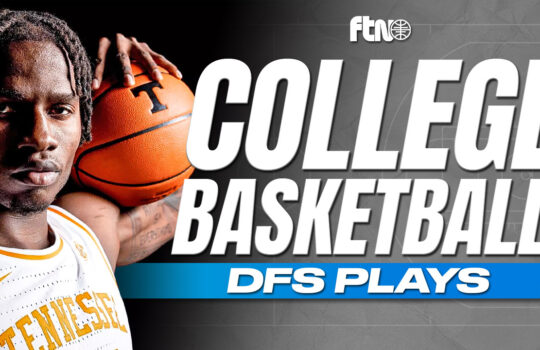











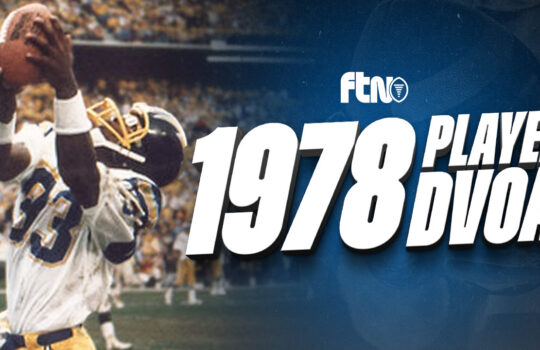






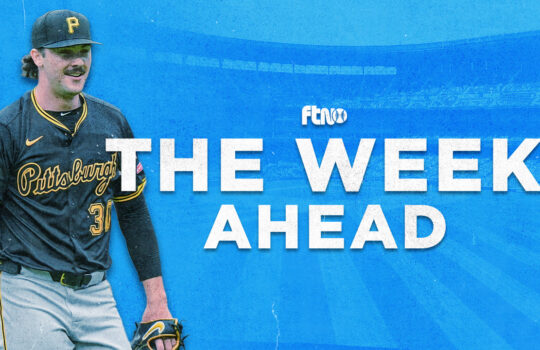





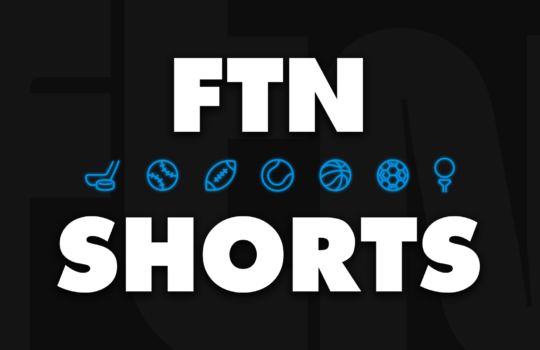




 New York Jets
New York Jets  New England Patriots
New England Patriots  Miami Dolphins
Miami Dolphins  Buffalo Bills
Buffalo Bills  Pittsburgh Steelers
Pittsburgh Steelers  Cleveland Browns
Cleveland Browns  Cincinnati Bengals
Cincinnati Bengals  Baltimore Ravens
Baltimore Ravens  Tennessee Titans
Tennessee Titans  Jacksonville Jaguars
Jacksonville Jaguars  Indianapolis Colts
Indianapolis Colts  Houston Texans
Houston Texans  Las Vegas Raiders
Las Vegas Raiders  Los Angeles Chargers
Los Angeles Chargers  Kansas City Chiefs
Kansas City Chiefs  Denver Broncos
Denver Broncos  Washington Commanders
Washington Commanders  Philadelphia Eagles
Philadelphia Eagles  New York Giants
New York Giants  Dallas Cowboys
Dallas Cowboys  Minnesota Vikings
Minnesota Vikings  Green Bay Packers
Green Bay Packers  Detroit Lions
Detroit Lions  Chicago Bears
Chicago Bears  Tampa Bay Buccaneers
Tampa Bay Buccaneers  New Orleans Saints
New Orleans Saints  Carolina Panthers
Carolina Panthers  Atlanta Falcons
Atlanta Falcons  San Francisco 49ers
San Francisco 49ers  Seattle Seahawks
Seattle Seahawks  Los Angeles Rams
Los Angeles Rams  Arizona Cardinals
Arizona Cardinals 






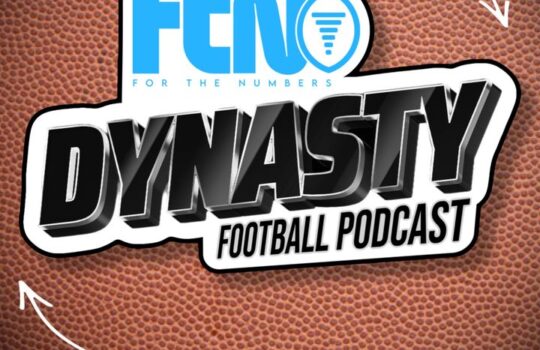
 Boston Celtics
Boston Celtics  Brooklyn Nets
Brooklyn Nets  Philadelphia 76ers
Philadelphia 76ers  New York Knicks
New York Knicks  Toronto Raptors
Toronto Raptors  Chicago Bulls
Chicago Bulls  Detroit Pistons
Detroit Pistons  Milwaukee Bucks
Milwaukee Bucks  Cleveland Cavaliers
Cleveland Cavaliers  Indiana Pacers
Indiana Pacers  Orlando Magic
Orlando Magic  Atlanta Hawks
Atlanta Hawks  Charlotte Hornets
Charlotte Hornets  Miami Heat
Miami Heat  Washington Wizards
Washington Wizards  Denver Nuggets
Denver Nuggets  Minnesota Timberwolves
Minnesota Timberwolves  Oklahoma City Thunder
Oklahoma City Thunder  Portland Trail Blazers
Portland Trail Blazers  Utah Jazz
Utah Jazz  LA Clippers
LA Clippers  Golden State Warriors
Golden State Warriors  Los Angeles Lakers
Los Angeles Lakers  Phoenix Suns
Phoenix Suns  Sacramento Kings
Sacramento Kings  Dallas Mavericks
Dallas Mavericks  Houston Rockets
Houston Rockets  Memphis Grizzlies
Memphis Grizzlies  New Orleans Pelicans
New Orleans Pelicans  San Antonio Spurs
San Antonio Spurs 









